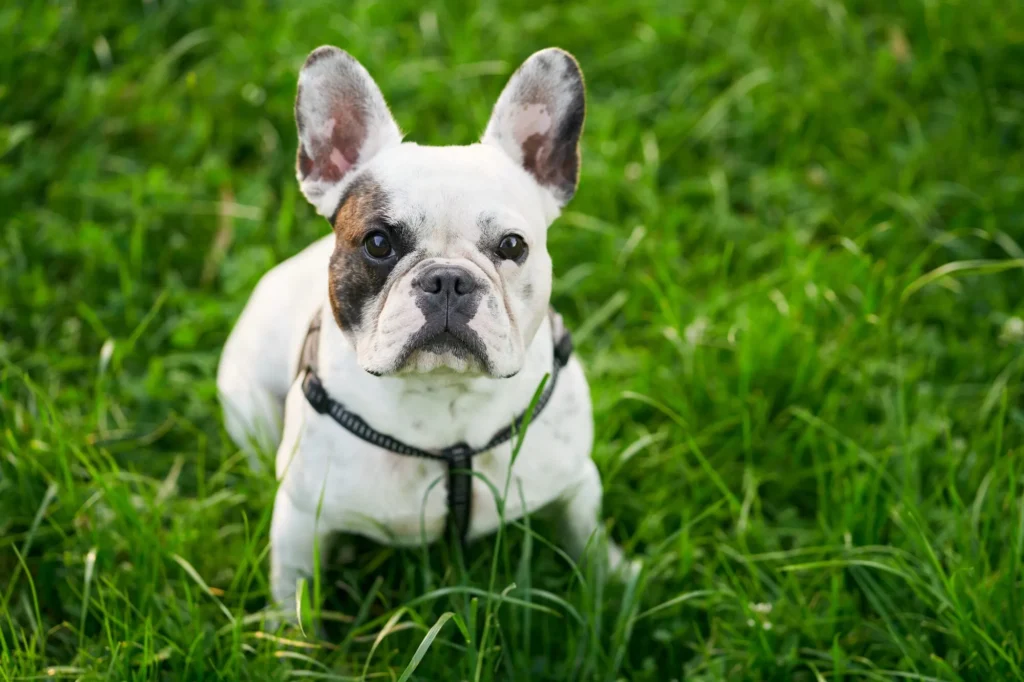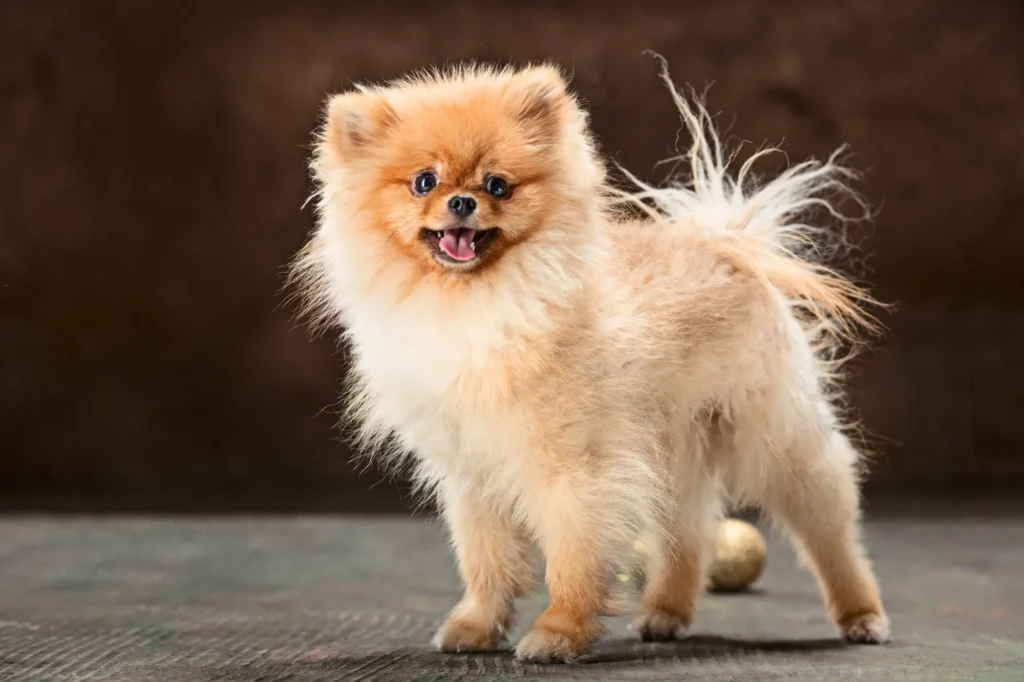Table of Contents
- Understanding Canine Intelligence: Beyond the Labels
- Why Some Dog Breeds Are Labeled as “Less Intelligent”
- The Truth About Dog Breeds That Take Longer to Train
- Dumbest Dog Breeds: Debunking Popular Misconceptions
- Independent Thinking vs. Trainability in Dogs
- Breeds Often Misunderstood for Their Intelligence
- How to Successfully Train “Hard-to-Train” Breeds
- 10 Dumbest Dog Breeds
- The Role of Breeding History in Dog Intelligence
- Understanding Your Dog’s Learning Style
- Conclusion
- FAQ
When we talk about the dumbest dog breeds, we often get it wrong. Dog intelligence is more than just following commands or learning fast. It involves complex thinking that goes beyond simple training.
Ranking dogs by breed doesn’t tell the whole story of their smarts. Each dog has its own special talents that might not show up in tests. Some dogs are great at solving problems, while others are super good at reading people’s emotions.
To really get how smart dogs are, we need to look beyond old labels. Even dogs thought to be less smart can be amazing in their own ways. They might be super independent or have special jobs they’re great at.
Key Takeaways
- Canine intelligence is multi-dimensional
- Breed-based intelligence rankings are overly simplistic
- Dogs have diverse cognitive strengths
- Training success depends on multiple factors
- Individual dog personality matters more than breed stereotypes
Understanding Canine Intelligence: Beyond the Labels
Dog intelligence is more complex than just smart or dumb labels. When we look at dogs with low intelligence, we see they are more than just trainable pets. They have unique smarts.
The term ‘dumbest dog breeds’ is often misunderstood, as it overlooks the unique skills and strengths that many of these breeds possess. For instance, dogs like the Basset Hound may rank low in obedience tests but excel in scent tracking, which requires exceptional focus and determination. Similarly, the Chow Chow, often labeled as stubborn, is highly independent and resourceful, traits that served its ancestors well as guard dogs. Instead of dismissing these breeds, understanding their natural talents can lead to more effective training and a stronger bond between pet and owner.
Dog intelligence has many facets that researchers study closely. These different types of intelligence help us see beyond the old labels of least intelligent dog breeds.
Different Types of Dog Intelligence
The idea of ranking dumbest dog breeds often ignores the variety of strengths these breeds possess. Hunting dogs like the Basset Hound and Bloodhound may be slow to respond to commands but are unmatched in their scent-tracking abilities. Similarly, breeds like the Chow Chow and Shih Tzu exhibit incredible independence, a form of intelligence that allows them to thrive in different environments. These unique abilities often go unnoticed in traditional intelligence tests.
Experts have identified three main types of dog intelligence:
- Instinctive Intelligence: Natural talents based on their original purpose
- Adaptive Intelligence: Skills in solving problems and learning from their surroundings
- Working/Obedience Intelligence: Their ability to understand and follow human commands
How Scientists Measure Dog Smarts
Measuring dog intelligence is not easy. Researchers use various methods, including:
- Problem-solving tests
- Memory challenges
- Social interaction evaluations
- Task completion speed
“Intelligence in dogs is not about being ‘smart’ or ‘dumb’, but about understanding their unique capabilities.” – Dr. Stanley Coren, Canine Psychology Expert
The Role of Evolution in Breed Intelligence
Breed-specific intelligence comes from generations of selective breeding. Dogs with low intelligence in one area might be great in another. This shows their ancestral roles and environmental adaptations.
While many lists of the dumbest dog breeds focus on trainability, they often fail to account for other forms of intelligence. Breeds like the Afghan Hound, for example, are independent thinkers, a trait often mistaken for stubbornness. Similarly, Bulldogs may not excel in agility or obedience tasks but have exceptional emotional intelligence and the ability to bond deeply with their owners. These so-called ‘dumbest dog breeds’ demonstrate that intelligence is not one-size-fits-all but a spectrum of unique abilities
Understanding these complex intelligence variations helps us see our dog’s strengths. It goes beyond simple breed labels.
Why Some Dog Breeds Are Labeled as “Less Intelligent”

When people wonder if some dogs are dumb, they often get it wrong. Dog smarts are complex and varied. Each breed has its own traits that might seem like they’re not very smart.
Labeling some breeds as the dumbest dog breeds often comes from misunderstanding their traits. Many of these breeds, like the Beagle or the Basenji, have been bred for specific roles that prioritize independence or sensory skills over obedience. For example, a Beagle’s exceptional sense of smell often makes them appear distracted, while a Basenji’s quiet, independent nature is mistaken for aloofness. These characteristics show how intelligence is tied to their original purposes, not just how well they follow commands.
Some dogs are thought to be dumb because of their breed traits and what we expect from them. For example, Afghan Hounds are independent and might not always listen during training. This doesn’t mean they’re not smart.
- High energy dogs might seem distracted
- Independent breeds can look uninterested
- Working dogs have specialized intelligence
Breed traits greatly affect how smart we think dogs are. Hunting dogs like Basset Hounds have amazing skills for tracking scents. These skills show they’re very smart, even if they don’t always listen to commands.
When discussing the dumbest dog breeds, it’s important to remember that these labels don’t fully capture a dog’s true intelligence. Many breeds on this list, such as the Afghan Hound and the Bulldog, have traits that make them seem stubborn or slow to learn commands. However, these so-called ‘dumbest dog breeds’ often excel in unique areas like independent thinking, loyalty, or specialized tasks such as scent tracking or guarding. By understanding their natural instincts and needs, we can better appreciate the hidden intelligence behind these misunderstood breeds.
| Breed Characteristic | Perceived Intelligence | Actual Capability |
|---|---|---|
| Independent Nature | Low Trainability | Selective Focus |
| High Energy | Lack of Concentration | Active Learning Style |
| Specialized Skills | Less Adaptable | Unique Intelligence |
Understanding your dog’s unique intelligence requires patience and appreciation for their individual strengths.
“Intelligence in dogs is not about obedience, but about problem-solving and adaptation.” – Dr. Stanley Coren, Canine Intelligence Expert
The Truth About Dog Breeds That Take Longer to Train
Training dogs can be a complex journey, especially with slowest learning dog breeds. Not all dogs learn commands easily. It’s important to understand the nuances of dog training for success.
Some dogs need more patience and special training methods. The learning process differs across breeds due to various factors.
Common Training Challenges
- Breed-specific cognitive processing differences
- Attention span variations
- Genetic predispositions to independence
- Sensory processing unique to certain breeds
Breed-Specific Learning Patterns
Each dog breed learns differently. Working breeds often learn tasks quickly. But, companion breeds might find complex commands hard.
| Breed Category | Training Difficulty | Primary Characteristics |
|---|---|---|
| Hound Breeds | High | Independent thinkers, scent-driven |
| Herding Breeds | Moderate | Task-oriented, intelligent |
| Toy Breeds | Low | Easily distracted, attention-seeking |
Environmental Factors Affecting Training
Success in training goes beyond breed. Your dog’s early socialization, home environment, and experiences greatly affect their learning.
“Understanding your dog’s unique learning style is the key to effective training.” – Professional Dog Trainer
Remember, persistence, positive reinforcement, and tailored training can help even the most challenging breeds become well-trained companions.
Dumbest Dog Breeds: Debunking Popular Misconceptions
When we talk about the top 10 dumbest dog breeds, it’s important to know that intelligence varies. Some dog breeds might seem less obedient, but they have special traits that people often misunderstand.

Despite being labeled as the dumbest dog breeds, these dogs excel in areas that are often overlooked in intelligence rankings. Afghan Hounds, for example, were bred for hunting and are skilled at making quick decisions independently. Similarly, the Bulldog is a master of perseverance, showcasing incredible determination and resilience. These traits remind us that intelligence in dogs is as diverse as the tasks they were bred to perform.
“Intelligence in dogs is more about adaptability and problem-solving than simple obedience,” says Dr. Stanley Coren, renowned canine psychology expert.
Some dogs seem hard to train because they are very independent. They have strong instincts and were bred for jobs that don’t fit with usual training.
- Breeds often labeled as “dumb” are actually intelligent in different ways
- Independent thinking can be mistaken for low intelligence
- Cultural expectations influence perceptions of canine intelligence
Now, let’s look at some dog breeds that are often misunderstood:
| Breed | Perceived Intelligence | Actual Strengths |
|---|---|---|
| Basset Hound | Low trainability | Exceptional scent tracking skills |
| Bulldog | Slow learner | Strong problem-solving abilities |
| Chow Chow | Stubborn | High independence and survival instincts |
Remember, every dog is unique. What seems like low intelligence might just be a different way of thinking.
Independent Thinking vs. Trainability in Dogs
Dog intelligence is more than just following commands. Some stubborn dog breeds show great thinking and decision-making skills.
It’s key to know that independent dog breeds are not less smart. They are just more self-guided.
The Intelligence of Stubborn Breeds
Some breeds have amazing problem-solving skills. They might seem stubborn because of their independent nature. This comes from their original purpose:
- Herding breeds like Australian Cattle Dogs
- Guard dogs such as Chow Chows
- Hunting breeds like Basenji
Working vs. Companion Breed Intelligence
Different breeds have different kinds of intelligence. Working breeds often have more complex thinking. This is different from companion breeds.
| Breed Type | Intelligence Characteristics | Training Adaptability |
|---|---|---|
| Working Breeds | High problem-solving skills | Task-oriented learning |
| Companion Breeds | Social intelligence | People-pleasing behaviors |
“Intelligence in dogs is not about blind obedience, but adaptive thinking.” – Dr. Stanley Coren, Canine Behavior Expert
Knowing your dog’s thinking style can make training fun and rewarding.
Breeds Often Misunderstood for Their Intelligence
Not all dogs are the same when it comes to listening to commands. Some breeds might seem less smart because they think in their own way. Dogs that find it hard to follow commands often have special traits that make training tough.
The least obedient dog breeds ranked show interesting things about how dogs think. For example, the Afghan Hound isn’t dumb. They are independent and think for themselves. Their royal background means they might not always follow commands right away.
- Basenji: Known as the “barkless dog” with exceptional problem-solving skills
- Bulldog: Stubborn but incredibly smart in their own way
- Chow Chow: Independent and selective about following instructions
“Intelligence in dogs isn’t just about blind obedience, but about understanding and adapting.” – Canine Behavior Experts
These breeds show intelligence in different ways. A Basenji might not sit right away, but they solve problems cleverly. Bulldogs might seem slow to learn, but they really get human feelings and what’s going on.
Getting to know your dog’s special kind of smartness takes time. Some breeds are more strategic, taking their time to think before acting on commands.
Success in training comes from understanding each breed’s unique way of thinking. What looks like not listening might actually be a smart way of thinking for dogs.
How to Successfully Train “Hard-to-Train” Breeds
Training dog breeds that are hard to train can be tough, but it’s doable. Every dog learns in their own way, needing patience, understanding, and the right method. The key is to know your dog’s personality and adjust your training to fit them.
Dealing with stubborn dog breeds needs a smart and caring approach. To train them well, you must understand their special needs and what drives them.

Effective Training Techniques
Here are some effective strategies for training tough dog breeds:
- Start training early and keep up with regular sessions
- Use short, fun training periods
- Make training sessions enjoyable and rewarding
- Keep distractions away during training
Building Patience and Consistency
“Training a stubborn dog is less about domination and more about communication.” – Professional Dog Trainer
Patience is key when training hard-to-train dog breeds. Stay calm and have realistic goals. Regular training helps dogs learn what’s expected of them.
Positive Reinforcement Strategies
Positive reinforcement is the best way to train stubborn breeds. It encourages good behavior by rewarding it. Use tasty treats, lots of praise, and quick rewards to keep your dog motivated.
- Choose treats that really get your dog excited
- Give praise right after they do something right
- Avoid using punishment in training
- Always celebrate small wins
Remember, every dog is different. What works for one might not work for another. Stay patient, keep trying, and always be positive in your training.
10 Dumbest Dog Breeds
Here are 10 dog breeds often labeled as the “dumbest,” though it’s important to note that intelligence varies by breed and purpose:
- Afghan Hound
- Why was it classified as dumbest dog breeds”dumbest dog breeds” : Highly independent, ignores commands
- Basenji
- Why was it classified as dumbest dog breeds”dumbest dog breeds” : Stubborn, not eager to follow commands
- Bulldog
- Why was it classified as dumbest dog breeds”dumbest dog breeds” : Slow to learn, low energy, hard to motivate
- Chow Chow
- Why was it classified as dumbest dog breeds”dumbest dog breeds” : Aloof, uninterested in training
- Borzoi
- Why was it classified as dumbest dog breeds”dumbest dog breeds” : Not very obedient, slow in response
- Bloodhound
- Why was it classified as dumbest dog breeds”dumbest dog breeds” : Easily distracted, hard to train
- Pekingese
- Why was it classified as dumbest dog breeds”dumbest dog breeds” : Stubborn, refuses commands
- Beagle
- Why was it classified as dumbest dog breeds”dumbest dog breeds” : Easily distracted by scents, struggles with focus
- Mastiff
- Why was it classified as dumbest dog breeds”dumbest dog breeds” : Slow learners, low energy
- Basset Hound
- Why was it classified as dumbest dog breeds”dumbest dog breeds” : Low obedience, slow response to training
The Role of Breeding History in Dog Intelligence
To understand dog intelligence, we must look into their breed histories. Many funny dog breeds that act silly have interesting origins. Their seeming lack of smarts often comes from being bred for specific tasks.
Breed history greatly influences a dog’s brain traits. Low-energy dog breeds thought to be dumb were actually bred for certain jobs. For example, some were made to think for themselves, not just follow commands.
“A dog’s intelligence isn’t about blind obedience, but about understanding its historical context.” – Dr. Stanley Coren, Canine Psychology Expert
- Hunting breeds developed problem-solving skills for tracking
- Herding dogs cultivated independent decision-making abilities
- Guardian breeds prioritized protective instincts over traditional training
Some breeds might seem less smart because they were bred for different skills. For instance, Basset Hounds were made for tracking scents. They might seem off during regular training but are great at their job.
| Breed | Original Purpose | Perceived Intelligence |
|---|---|---|
| Bulldog | Bull Baiting | Low Trainability |
| Beagle | Rabbit Hunting | Scent-Driven Focus |
| Bloodhound | Tracking | Specialized Intelligence |
Understanding the link between breeding history and dog smarts helps us see our pets in a new light. What looks like low intelligence is often proof of generations of careful breeding.
Understanding Your Dog’s Learning Style
Every dog is unique, with its own special way of learning and understanding the world. Dog intelligence ranking by breed doesn’t tell the whole story. Your furry friend might surprise you with hidden cognitive abilities that go beyond typical breed characteristics.
Recognizing your dog’s individual intelligence traits is crucial for effective training. Misunderstood dog breeds intelligence often stems from owners not understanding their pet’s specific learning approach.
Identifying Your Dog’s Cognitive Strengths
Dogs exhibit different types of intelligence. Some excel in:

- Instinctive intelligence (breed-specific skills)
- Adaptive intelligence (problem-solving abilities)
- Working and obedience intelligence (following commands)
Tailoring Training to Your Dog’s Needs
“Understanding your dog’s unique learning style is the key to successful training and a stronger bond.”
To adapt your training methods effectively, consider these strategies:
- Observe your dog’s natural behaviors
- Use positive reinforcement techniques
- Adjust training pace to match your dog’s learning speed
- Provide mental stimulation through interactive games
Remember, intelligence is not a one-size-fits-all concept in the canine world. Each dog has potential waiting to be unlocked with patience and understanding.
Conclusion
Understanding dog intelligence goes beyond simple rankings. Each dog has its own unique brain abilities. These are shaped by their history, purpose, and life experiences.
The ranking of dog breeds by intelligence is just a guide. Dogs from breeds thought to be less smart can still do amazing things. What’s key is to see and support your dog’s special talents.
Success in training comes from good communication and patience. Instead of focusing on breed labels, build a strong bond with your dog. Every dog can learn and grow with the right approach and positive feedback.
The real test of a dog’s smarts is the bond you share. Get to know your dog’s learning style and you’ll see their true potential. This goes beyond old ideas about the dumbest dog breeds.
FAQ
Are some dog breeds actually less intelligent?
Dog intelligence is complex and can’t be labeled simply as “dumb” or “smart”. Different breeds have unique strengths based on their history and original uses. What seems like low intelligence might just be a different kind of smarts that don’t fit traditional training.
How do scientists measure dog intelligence?
Researchers look at dog intelligence in several ways: working and obedience, instinctive, and adaptive. They consider how fast a dog learns commands, solves problems, and uses breed-specific skills. But, no single test can say for sure how smart a dog is.
Which dog breeds are considered the most challenging to train?
Breeds like the Afghan Hound, Basenji, and Bulldog are seen as tough to train. But, this is because of their independent nature and unique ways of thinking, not because they’re not smart. They need patient, specialized training that respects their natural instincts.
Can a dog’s intelligence be improved through training?
Yes! While breeds have different learning abilities, training can boost a dog’s smarts. Use positive reinforcement, understand your dog’s learning style, and make training fun. This will help unlock their full potential.
Why do some dogs seem to learn commands more slowly?
There are many reasons for slow learning, like breed traits, personality, training methods, and environment. Some dogs are bred for tasks that don’t match traditional obedience training. This can make them seem slower to learn.
Are low-energy dogs less intelligent?
No, a dog’s energy level doesn’t show how smart they are. Breeds like Bulldogs or Basset Hounds might seem less active, but they’re often very smart in their own way. Their learning style is just different from high-energy breeds.
How can I effectively train a breed considered “hard to train”?
Success comes from knowing your dog’s unique traits. Use positive reinforcement, keep training short and fun, and find rewards that motivate your dog. Be patient and tailor your training to fit your dog’s learning style.
Do breed stereotypes about intelligence harm dogs?
Yes, stereotypes can harm dogs. They can lead to unrealistic expectations, bad training, and neglect. Each dog is unique with their own strengths. It’s more important to understand and appreciate these than to follow breed stereotypes.
